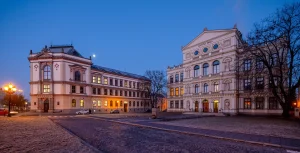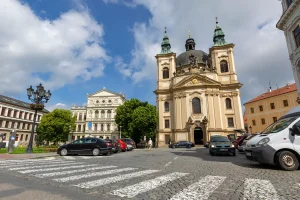Church of St John the Baptist
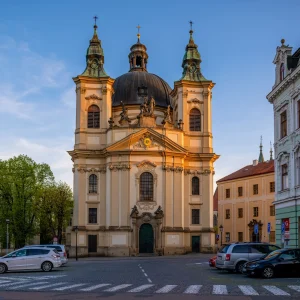
The Piarist church was built on the site of a medieval commandery of the Knights Hospitaller with a hospital and church. This property was given by Bishop Karel II of Liechtenstein-Castelcorn to the Piarists, who added the building of today’s conservatory and only afterwards had a new monumental Baroque church built in its place, completed in 1767. The domed church with an oval nave and two prismatic towers follows, in its layout and especially in the shape of its façade, the design of St Peter’s Church in Vienna.
Blacksmith’s Gate in Kroměříž
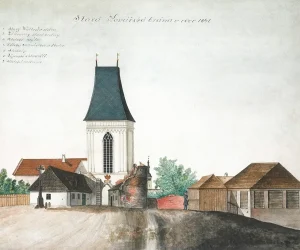
The now non-existent Blacksmith’s Gate used to be one of the three original town gates guarding the entrance to the historic town. It was the main and most thoroughly fortified gate, where the main long-distance roads from Brno and Olomouc converged. Its appearance, with a stone bridge over the moat, is known only from old depictions. It is believed to have been a Gothic prismatic tower with a passageway on the ground floor, dating from the 14th to 15th centuries, surrounded by the town’s fortifications. In the 16th and 17th centuries, the Blacksmith’s Gate was supplemented with a pair of tall towers, making the whole complex a well-defensible fortress. The gate got its name from the blacksmiths, who had their workshops nearby outside the fortifications due to the fire risk.
Judicial Academy Building
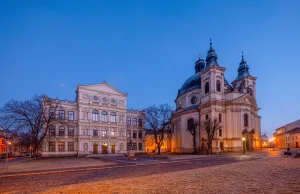
One of the most important Neo-Renaissance buildings in Moravia, it was constructed between 1875 and 1877 to a design by architect Gustav Meretta. The building is decorated with statues by Antonín Tomáš Beck representing allegories of science, architecture, sculpture, and painting. Other works can also be found here, such as a statue of Jan Amos Komenský and of Kroměříž native Ferdinand Stolička. Initially, the building housed the German secondary school and later other educational institutions. Since 1994, it has been home to the Judicial Academy, established under the Act on Courts and Judges as an institution of the Ministry of Justice for the training of judges, public prosecutors, and other justice sector employees.
Statue of T. G. Masaryk
The life-size bronze statue was created by Otto Gutfreund and unveiled on 28 October 1928. In June 1940, it was removed by the Nazis, but right after the war, on 28 October 1947, it was restored. Unfortunately, not for long – in June 1953, the monument was removed again on the initiative of Alexej Čepička with the help of the People’s Militia. It was only after the Velvet Revolution that the T. G. Masaryk monument finally found a dignified and permanent place. With the assistance of experts from the National Gallery in Prague, the foundry in Dolní Lhota near Blansko cast the reconstructed statue, which was ceremoniously unveiled at its current location on 7 March 1993.
Max Švabinský – Birthplace
Max Švabinský is rightfully among the most notable natives of Kroměříž. This famous Czech painter and graphic artist, whose exceptional talent and eye for detail brought him fame even abroad, was born on 17 September 1873 in this modest house in today’s Jánská Street. The birthplace of Max Švabinský remains a lasting reminder of his humble beginnings and his deep connection to Kroměříž, which influenced his life’s work. Švabinský’s works, from oil paintings to graphics, reflect his sensitivity to nature and the harmony he experienced in childhood. The nearby Kroměříž Museum houses more than 130 of his original works, including important paintings such as Yellow Parasol and Union of Souls. This collection is the largest public holding of his work and showcases his artistic development and legacy.

